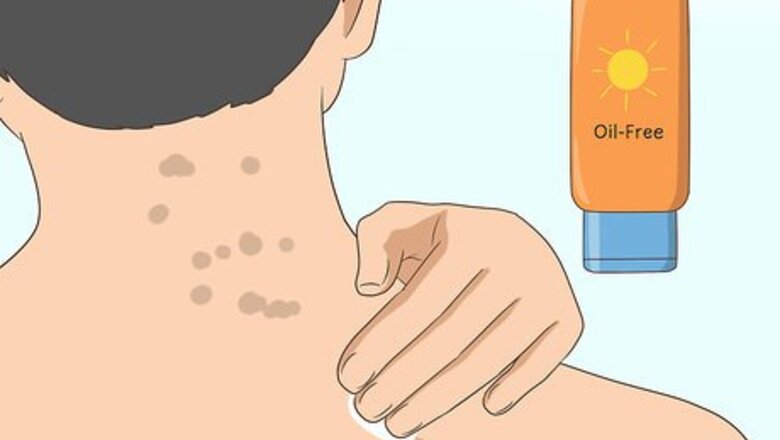
views
Applying Products for Discoloration Scars
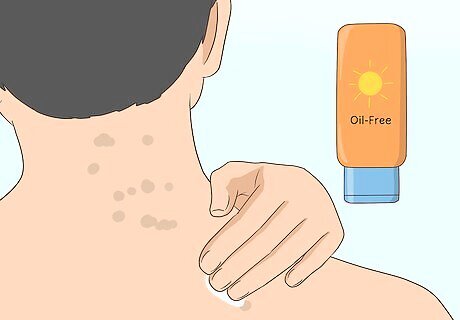
Apply an oil-free sunscreen to prevent further scar darkening. Back acne discoloration scars are typically darker than your surrounding skin, and sun exposure can darken them further. So, if your discoloration scars are on your shoulders, the back of your neck, or another area that receives sunshine regularly, apply a broad-spectrum sunscreen to limit further darkening of the skin. Look for an oil-free sunscreen meant for sensitive skin. Oily sunscreens may contribute to additional acne breakouts. Cover the area with clothing (e.g., by avoiding low-back tank tops) whenever possible, but apply sunscreen even when the area is covered with clothing.
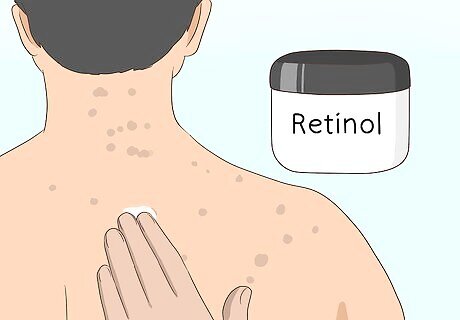
Increase cell replacement with a cream containing retinol. Retinol speeds up skin cell replacement, which is why it can help reduce the appearance of wrinkles. Retinol can also speed up the replacement of the discolored skin cells found on your back. Apply the product as directed to your skin, focusing on your back acne discoloration scars. You may need to enlist the help of a friend to apply it to hard-to-reach spots on your back.
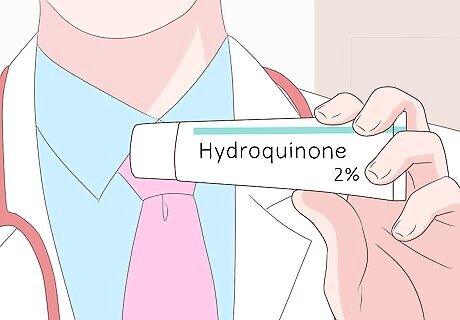
Ask your doctor about fading creams with hydroquinone. Hydroquinone is a lightening agent that can speed up the fading of skin discoloration spots, and creams with up to 2% hydroquinone are available without a prescription in the U.S. However, in some cases, it may cause skin irritation or additional skin discoloration, so you may want to consult your dermatologist before using it. Apply the product as directed on the package or by your dermatologist. Hydroquinone is banned in Europe due to concerns over skin reactions, including skin dryness, redness, irritation, and sometimes cracking, blistering, and bleeding.
Use at-home products with lactic acid, salicylic acid, or benzoyl peroxide. Mohiba Tareen, a board-certified dermatologist, suggests washing your back with a wash that has glycolic or lactic acid, salicylic acid, or benzoyl peroxide to prevent acne. Cleansing products with these active ingredients have been proven to not only control acne but also improve overall skin texture and appearance. Ask your dermatologist for product recommendations, or look in the drug store for washes marketed with these ingredients. Lactic acid can help lighten acne scars and improve skin texture and pigmentation. Salicylic acid unclogs pores and treats blemishes with exfoliation. Benzoyl peroxide actively targets, treats, and kills acne-causing bacteria. Follow the instructions on the label of your chosen products, or ask your dermatologist about how to use them for your particular needs.
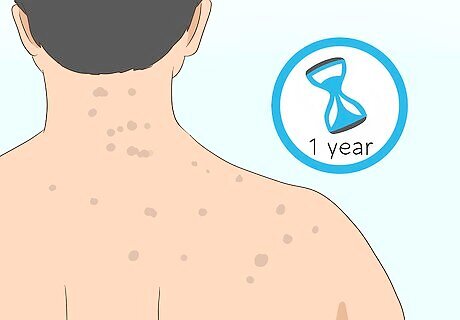
Wait it out and let the discoloration fade. The most common type of back acne scar isn’t a scar but post-inflammatory hyperpigmentation—a temporary discoloration of the skin. In most cases, this pink, red, purple, brown, or black discoloration will fade on its own within 12 months. If you run your fingers over your back and the skin feels generally smooth, most of your back acne scarring is likely post-inflammatory hyperpigmentation. However, the only way to know for sure is to visit your dermatologist. Post-inflammatory hyperpigmentation can also occur after cuts, scrapes, and other injuries to the skin, and all the remedies mentioned here should be equally effective in those cases as well.
Giving Home Remedies a Try
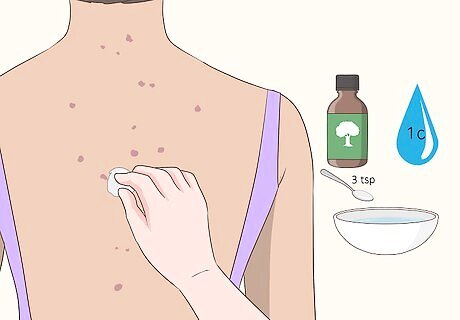
Apply tea tree oil 2 to 3 times daily. Some research suggests that tea tree oil has anti-inflammatory and antiseptic properties that can help reduce acne and acne scars. Stir 2–3 tsp (9.9–14.8 ml) of tea tree oil into 1 c (240 ml) of lukewarm water. Use cotton balls or swabs to apply the mixture to your back acne scars 2 to 3 times per day. It may be difficult to reach the acne scars on your back yourself. You may need to enlist the services of a helper to apply the treatment. As with other home remedy treatments, there is little medical evidence that tea tree oil works to reduce back acne scars. Always consult with your doctor before trying a homeopathic remedy.
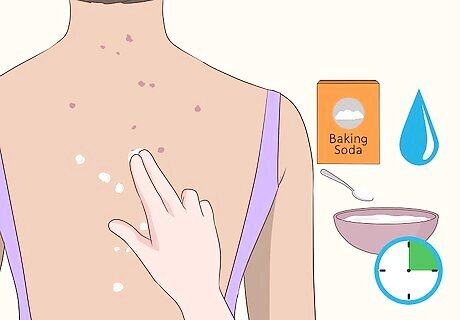
Put on a baking soda paste for 10 to 15 minutes. Add a spoonful or two of baking soda to a bowl, then stir in just enough lukewarm water to create a thick paste. Use your fingers to apply the paste to your back acne scars, massaging it in gently to help exfoliate your skin. Rinse the paste away after 10 to 15 minutes. Some people swear by this home remedy, doing it once daily before they take a shower. In some studies, baking soda has been shown to provide some antibacterial and anti-inflammatory properties; however, its benefits for treating back acne scars aren’t medically proven. Board-certified dermatologist Mohiba Tareen advises that you shouldn’t use any form of exfoliation (including baking soda) if you have red, inflamed acne, as this will make the inflammation worse.
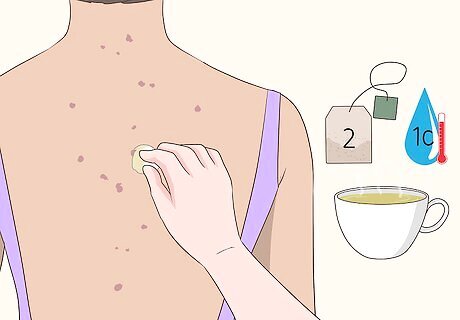
Brew up green tea and apply it to the scars. Steep 2 tbsp (30 g) of loose green tea, or 2 to 3 tea bags, in 1 c (240 ml) of hot water for 10 to 20 minutes. Use cotton balls, cotton swabs, or a washcloth to apply the brewed green tea to your back acne scars 2 to 3 times a day. Some studies suggest that the antioxidants in green tea can provide anti-inflammatory benefits to reduce scarring; however, this isn’t medically proven.
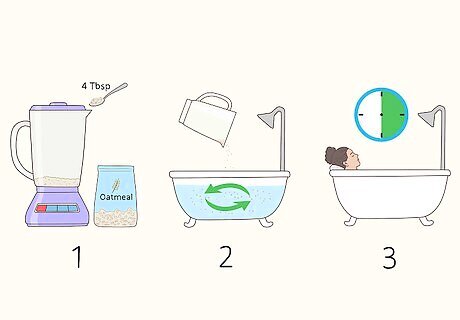
Add ground oatmeal to your bath water. Oatmeal is believed to be a natural exfoliant and moisturizer and may help reduce skin irritation and inflammation. For this home remedy, grind up 4 tbsp (60 g) of plain oatmeal into a fine powder with a blender or spice grinder, then vigorously stir it into your bathwater. Soak in the tub for around 30 minutes. Take an oatmeal bath daily for the best results. Alternatively, mix the ground oatmeal with honey to make a paste and apply it to your back acne for 15 to 20 minutes, then rinse it away. Expert Answer Q Is there anything I can do to prevent back acne? Mohiba Tareen, MD Mohiba Tareen, MD FAAD Board Certified Dermatologist Mohiba Tareen is a board certified Dermatologist and the founder of Tareen Dermatology located in Roseville, Maplewood and Faribault, Minnesota. Dr. Tareen completed medical school at the University of Michigan in Ann Arbor, where she was inducted into the prestigious Alpha Omega Alpha honor society. While a dermatology resident at Columbia University in New York City, she won the Conrad Stritzler award of the New York Dermatologic Society and was published in The New England Journal of Medicine. Dr. Tareen then completed a procedural fellowship which focused on dermatologic surgery, laser, and cosmetic dermatology. Mohiba Tareen, MD EXPERT ADVICE Answer from Mohiba Tareen, MD: The skin on your back is a lot thicker than other parts of your body, so it can be difficult to treat acne there. The main tips I recommend are to always shower right after you work out, and to avoid really tight clothing like a sports bra or trainer after you work out. Also, shower with a wash that has an ingredient like glycolic acid, lactic acid, salicylic acid, or benzoyl peroxide. If you're trying this and you still have significant back acne, it may be necessary to go on oral medication (because topical medications have a difficult time penetrating into that thick skin).
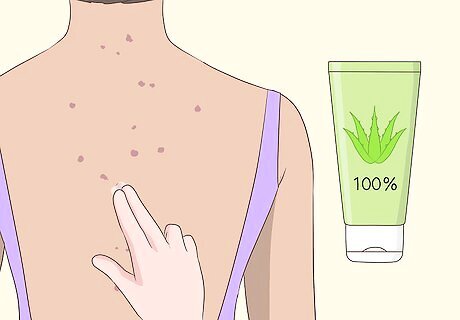
Dab 100% aloe vera gel on your back acne scars. Many studies suggest that aloe is a natural moisturizer and can be used to soften skin, reduce irritation, and boost skin cell growth. Apply the gel to your back acne scars with your fingers twice daily. Some people using this method say they’ve seen improvement in their acne scars within a week; however, there’s no guarantee.
Getting Dermatological Treatment
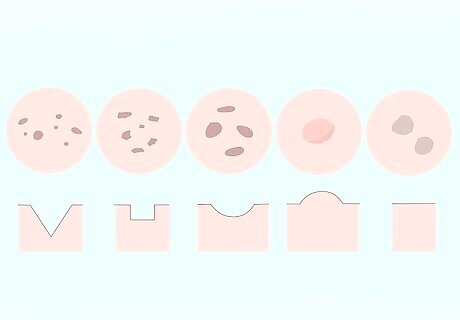
Let the dermatologist diagnose your type(s) of back acne scarring. Not all back acne scars are the same, and different treatments work best for different types of scars. Visit a dermatologist to diagnose your back acne scar type and learn which treatment is best for you. The most common scar types are: Ice pick scars: Narrow, deep scars Boxcar scars: Deep circular or oval scars with steep sides Rolling scars: Undulating, wave-like scars with undefined edges Hypertrophic scars: Raised scars Post-inflammatory hyperpigmentation: Not raised or pitted, not technically a scar—a discoloration that can be pink, red, purple, brown, or black
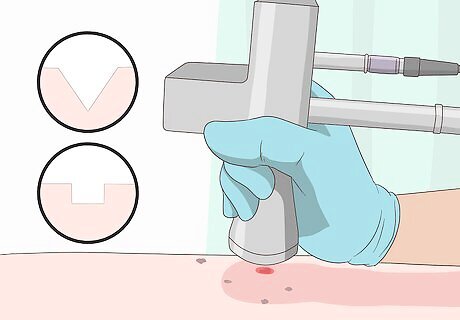
Try laser treatments for ice pick or boxcar scars. Ablative laser treatments remove the top layers of skin, stimulating new tissue growth without scarring. Many dermatologists offer this treatment, and it’s relatively quick and painless. However, you will experience redness in the treated areas for at least 2 weeks and possibly up to several months. Non-ablative laser treatments don’t destroy the top layers of skin and instead stimulate new skin-tightening collagen formation from beneath. They’re quick, painless, and leave no redness, but they are only useful for hyperpigmentation or minor scars. It takes weeks to months for the skin to regenerate without the scars, so this isn't a quick fix.
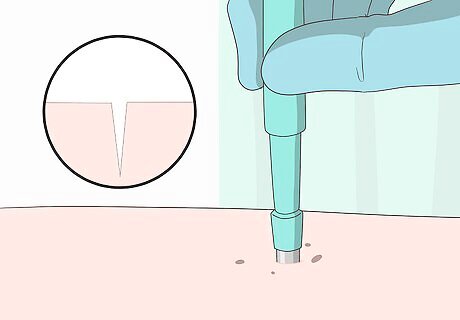
Undergo punch excision, elevation, or grafting for deep scars. All of these “punch” techniques use tools that are similar in a way to tiny cookie cutters. They punch out (remove) the scar tissue, then the area is sutured. The scarring from the sutures will fade over time. Punch grafting includes using skin grafts (usually from behind the ear) to replace the tissue from very large acne scars. While you’re trading one type of scar for another, the suture scarring will usually disappear within several months. Your dermatologist might use dermabrasion treatments to speed the process along.
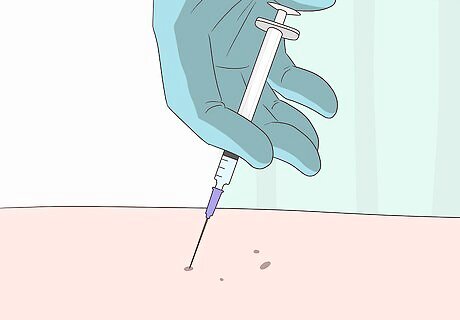
Have dermal fillers injected to raise pitted scars quickly. With this treatment, your dermatologist injects a substance (often bovine collagen or fat from elsewhere in your body) beneath the deep scars, raising them to the surface. This is a temporary measure, however, and will need to be repeated every several months for ongoing results. Dermal fillers are a good “quick fix” technique to reduce the look of back acne scars as soon as possible.
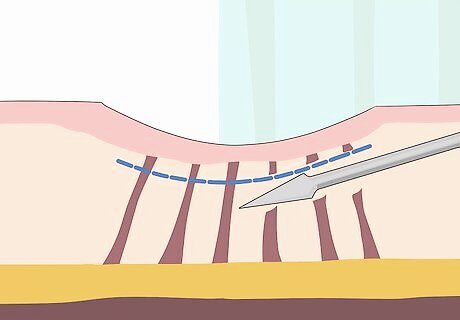
See if subcutaneous incisions help with undulating scars. Instead of cutting down into the skin, subcutaneous incisions (or subcisions) are cut parallel to and just beneath the skin’s surface. This process severs the tissue bands that tether the skin in place, allowing it to rise and smooth out. This treatment works best on rolling scars that create a wavy texture on your skin. Your dermatologist can perform this procedure quickly using local anesthesia. You can see immediate results with this procedure but may have some minor discomfort and scarring at the small incision sites.

Use steroid creams or injections for raised scars. Steroids, given either as an injection or topical cream, can help reduce hypertrophic (raised) scars back down to surface level. Your dermatologist may give you injections one or more times in their office, or they may give you a steroid cream to apply to the area daily for several hours, then wipe off. Steroid treatments can take several months to be effective. If you are given a steroid cream to apply, follow the application instructions exactly as prescribed.
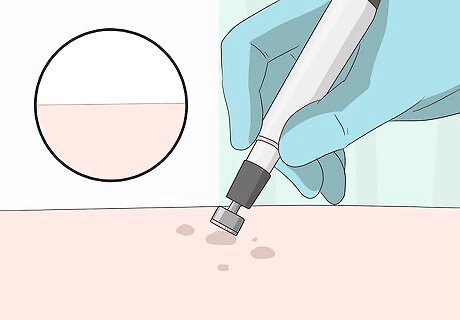
Give dermabrasion or microdermabrasion a try on discoloration scars. Dermabrasion is done under local anesthesia at your dermatologist’s office and involves using a tiny wire brush to scrape away the top layers of your skin. It can remove hyperpigmentation (discoloration) scars, as well as smaller ice-pick and boxcar scars. You’ll likely experience minor pain at the site for a few days and redness for up to several weeks. Microdermabrasion is more akin to sandblasting and impacts only the very top layers of skin. As such, it is only effective on discoloration scars. It can be done at day spas and medical offices and usually requires several treatments to be effective. You'll have to wait at least a few weeks for the redness to subside before noticing any positive results.




















Comments
0 comment